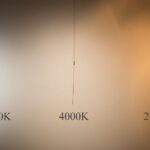Line and load wires are essential in supplying electricity that powers electrical devices inside buildings and homes. Without these wires, you won’t have any electricity that can power all the conveniences you have in your home. Line vs. load – what is the difference between them?
The line side of an electric outlet is where you need to connect the electric supply. Meanwhile, the load side of the same electric outlet is where the supplied power leaves the electric box or device and flows down the circuit to where electricity is needed.
The line is the wire that receives electricity from the power supply coming from the grid in very basic terms. The load is where the electricity goes or the destination point of the electric current. So, you can say that the lines are the conduits by which the electric current passes to reach the load.
Read on to learn more about line and load, what they are, their differences, and other related information about them so you can understand them better.
Line Vs Load – What Is the Difference Between Them?

Two Sides of an Electrical Outlet
There are two sides to an electric outlet, the line side, and the load side:
- Line of the outlet: Has a connection with the source of electric power.
- Load side: Where the electricity leaves the outlet to wherever it is needed.
In the simplest term, the lines serve as the pathways or conduits of the electric current that comes from a source, usually the grid. The load is the destination point of an electric circuit carrying the power supply.
Another way of understanding their differences is that a line is a wire that carries the current from a source into a switch. The line is upstream of the device that is switched. So, the line is always hot.
On the other hand, the load is the wire that is going from the switch into the device. A hot load wire means the switch is on.
What Are Line Wires?
You know that the electric utility company or the grid is the entity that supplies electricity to commercial and residential customers. To supply electricity to your home, the electric utility company can use electric poles or ground cables to feed electric cables to your house.
Inside these electric cables are three insulated wires:
- Hot
- Neutral
- Ground
To differentiate these three wires from one another, they are usually in three different colors.
You can refer to these three wires as line wires since they have a connection to the grid or the supplier of electric current. They are power supply lines, meaning they come from the source of electric power.
What Are Load Wires?
Load wires are similar to line wires in that they also have three wires:
- Hot,
- Neutral, and
- Ground.
All three wires are also insulated for safety, just like line wires.
When electricians install them in a building or structure, load wires can function as line wires as the electricians lay out the electric wiring inside the structure to serve all those who need electricity.
How the Grid Supplies Electricity to Your House
When the electricians of the utility company connect electricity to your main electrical panel or circuit breakers, they will step down the electricity coming from the grid using the electric transformer in the electric post so you can safely use electricity in your home.
Through an Electric Service Panel Located Outside or Inside Your Home
The electric utility company supplies electricity to your home through an electric service panel located outside or inside your home. This electric panel has a main switch that can cut off electricity to your entire house when you switch it off.
Several Circuit Breakers Protect and Control the Electric Circuits
Inside the electric panel are several circuit breakers. They are there to protect and control the different individual electrical circuits inside your home, such as the living room, bedroom, kitchen, and bathroom.
Electricity from the Grid Passes Through the Meter Box
Electricity from the grid passes through the meter box and then through the load wires. As the electrical current flows from the meter box, the load wires become the device’s line wires that need electricity to run.
As there are several electrical circuits in your home, this process continues and is repeated in every device.
Electric Current Flows Through the Lines to Receiving Devices
The electricians who wired your house did it so that the electric current is allowed to flow through the lines to receiving devices such as switches, light fixtures, and other electrical gadgets to complete the flow of electricity.
Line Wires Connect Electric Service Panel
The electric service panel is connected by the line wires, while the load wires connect to the next electrical devices. The flow of electricity continues enabling different electrical gadgets in your house to operate as they are switched on.
So, putting the concept in the plainest of words, the line wires or the line side of an electrical outlet is where it is connected to the incoming, original power source. The load side of the same electrical outlet is where electricity leaves the electrical box or device and travels down to the rest of the circuit.
Again, are line and load the same? The term line refers to the wire that carries power from the source to your device. In contrast, the term load refers to the wire that brings power to other devices towards the circuit.
Wiring a Light Switch and Outlet on the Same Circuit
Meaning of Line and Load in Electricity

Shorthand Words Used in the Electrical Trade
The terms’ line’ and ‘load’ are the shorthand words used in the electrical trade to describe electrical wires in a circuit. Line wire refers to the wires that deliver electricity from the source to a device. Load wire refers to the wires that carry electricity onward to other devices connected to the circuit.
Other Terms That Refer to Line and Load
Some electricians also refer to these wires as incoming (line) and outgoing (load), or upstream (line) or downstream (load). These terms are used in reference to an electrical box and a single device.
So, the wires that deliver power or electricity into the box are called line, incoming, or upstream wires. Meanwhile, the wires that pass onward to other devices are called a load, outgoing, or downstream wires.
Relative or Dependent on the DevDevice’scation in a Circuit
These terms are also relative or dependent on the device’s location in a circuit. The reason is that the load wire for one particular receptacle can become the line wire for the next outlet located downstream in the circuit.
A Line Is a Wire Feeding Electricity from the Electric Panel
A line is a wire feeding electricity from the electric panel in electrical terms.This is an upstream flow of the current when you consider the flow of electricity. there’se’s an upstream in electrical circuits, there is also a downstream.
That downstream refers to the load wires. So, load refers to the devices on the same electrical circuit that is downstream as it relates to the line wires. Buthere’s’s another meaning of load in electricity. It is the magnitude or amount of electricity consumed by a device in a particular electrical circuit.
How to Wire Outlets in Series and Parallel
Is It Necessary to Differentiate Line and Load Wires?
While there is a need to distinguish line wires from load wires, it is not always necessary.
For instance, in a regular wall switch or a single-pole, single-throw switch, you can connect the live wire or the line wire to the top or bottom terminal since there are only two switch positions – open or closed.
But the line and load terminals on a double-throw switch are differentiated because the connections of these terminals are directional. It can transfer power between two different loads. So, the hot circuit wire or line wire should always be connected to the line terminal.
The line and load terminals on ground fault interrupting outlets or GFIs are also clearly distinguished. The reason is that the outlets are fitted with breakers that interrupt the flow of current when there is a current surge.
While interchanging the line and load wires on a regular outlet has no adverse effect, it will make the circuit breaker useless if you do that on a GFI outlet. It will be dangerous as well since the outlewon’t’t be able to provide the protection it is supposed to give.
How to Identify Line and Load Wirings

If the wires are not clearly labeled, how do you distinguish the line wire from the load wire? If you are not an electrician, it will be hard for you to do it. Here are four ways you can tell the line wire from the load wire:
1. Colors
The different colors of electrical wires are confusing to most people. Yoshouldn’t’t be if you know that the colors of the electrical wires have their meanings. But these colors can be used interchangeably, so you need to know their usual meanings.
InsulatioWire’s’s Color
What you are seeing is the color of the insulation of the wire.
Another reason for this insulation is to insulate the wires from each other when they are already being used in electrical circuits. The wire itself is made of copper, so its color is shiny reddish-brown, which is the color of copper.
ElectricaWire’s’s Standard Colors
Here are the standard colors of electrical wires:
- Line wire – black
- Load wire – can be red or black
- Neutral wire – white and grey
- Ground wire – green or green with yellow stripes
2. Position
Their electric panel or circuit breaker position will tell you if they are line or load wires. The line wires or incoming wires are always connected to the electric panel from the bottom of the box. Meanwhile, the load wires are the wires coming from the top of the electric panel.
So, just by looking at the insides of the electric panel, you can already tell which wires are the line wires and which ones are the load wires.
3. Use a Neon Screw Driver
If you have a screwdriver with a neon light inside its plastic handle, you can use it to determine if the wire is line or load. All you have to do is touch the wire or the screw holding it with the tip of this screwdriver.
Make sure that an electrical device is running before you run this test. If the neon light glows up when you touch a wire, that wire is the line wire. There is a current flowing in that wire. If the light does not turn on, that is the load wire since there is no current flowing.
4. Multimeter
Get a multimeter, and set its selector to the highest voltage setting. Insert the black and red probes on their respective sockets on the multimeter. Then touch the multimeter’s black probe to the ground wire or any grounded object like the pipe of a faucet or a metal part of an appliance that is grounded.
And then touch the other wires with the red probe of the multimeter. The wire that generates a reading on the multimeter is the hot wire. The other wires are the neutral and the ground wire.
Can You Use Duct Tape Instead of Electrical Tape?
Conclusion: Line Vs. Load – What Is the Difference Between Them?
There are two sides to an electric circuit. An electric circuit flows from the line to the load. So, the line is the side of the electric outlet where the supply of electricity or power is connected. On the other hand, the load is where the electricity supply leaves the box or device and flows down to where the electricity is needed.
The line is the wire that goes from an electric current source into a switch in the simplest term. The load is where that electric current flows to its destination point. So, the line wires serve as the conduit used by electricity to pass through and reach the load.
Read next:


![Milwaukee M12 Vs M18 [What Is the Difference Between Them?] milwaukee m12 vs m18](https://homecarezen.com/wp-content/uploads/2022/01/Milwaukee-m12-vs-m18-150x150.jpg)







